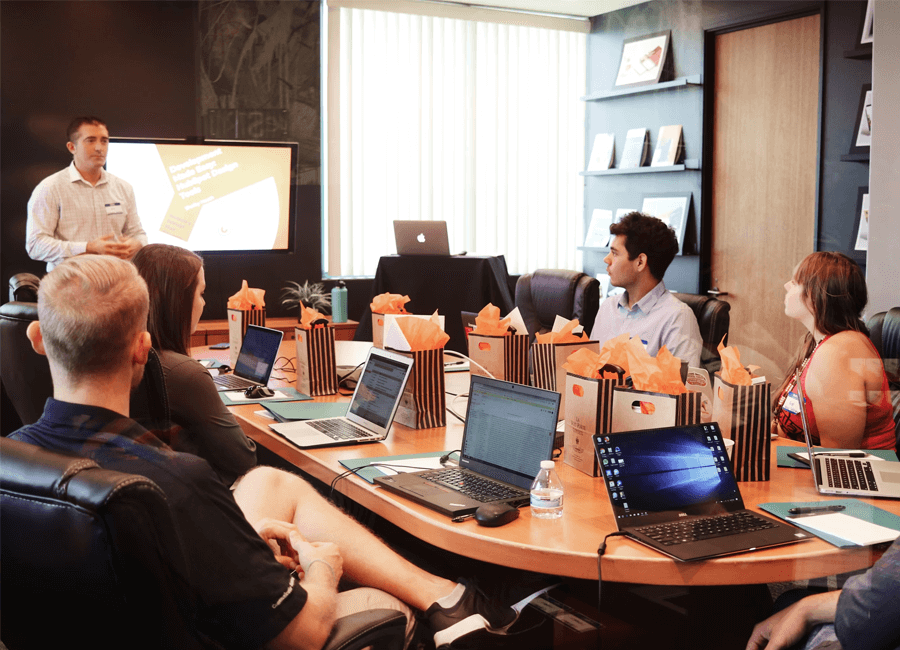With all the challenges insight teams and advocates face on a daily basis, it’s hard to tackle them all at once to make our lives easier. Most of the challenges are stakeholder-centric, with insight experts facing a chronic lack of research engagement, budget cuts upon budget cuts, and all sorts of other obstacles that confound our time, soak up resources and hinder most attempts to integrate insights into daily conversations.
Decision-making processes are intricate as they are integral to the role of insight experts; with AI taking over many extraneous and time-consuming research tasks, insight experts are slowly assuming new roles as business advisors and the point of call for up-to-date insights, but this role is in direct competition with the usual intuition-based decision-making processes that dominate most businesses in most industries.
Intuition is Not the Way to Success
Intuition-driven decision-making is a constant challenge in many aspects of life, both personal and professional. We automatically rely on historical experience when making decisions, coupling that with the situational information at hand to try and make the best decision possible.
But there comes a time when we meet the same similar decisions that need to be made day in and day out, and at that point, we start to make the same decisions over and over again without taking into account the new information – that is where the danger lies. That is when intuition can take over the decision-making, and become detrimental to present and future decisions.
How to Contest Influential Intuitions and Win
It is going to be a long, tough fight against intuition-based decision-making, especially when it comes to stakeholders who don’t understand the power of insights, and don’t care to learn.
So we need to start small, use lightly incongruous ways to disrupt the status quo and insert insights into a few more conversations than usual. Then, we grow the frequency of these conversations at a steady rate until it becomes almost second nature for stakeholders to talk about insights, remember them and use them in as many decisions as they find relevant.
In those small moments of disruption, there are great opportunities to take the time to understand how stakeholders communicate, how they absorb research and insights, how they implement insights and what their priorities are at that point in time. All the answers to these questions will help insight teams formulate the best insight communication tactics that stand the best chance of embedding insights activation into your stakeholders’ organisation and combatting any intuition-driven decision-making.
Using those tactics, the gradual ramping up of change won’t seem quite so disruptive, and even might be considered innovative enough to recruit more stakeholders on board who can aid in the insight team’s journey towards customer salience.
Sparking Continual Empathy
There are many ways to keep the insights flowing and prevent intuition-driven decision-making through all-access passes to relevant data and insights.
1. Sprint Review Research Structures
Taking a leaf from the Development Team’s handbook opens up numerous opportunities for new ways of operating both in research and across the wider business operations. In particular, the sprint review process holds a lot of potential for innovative research activity and insight communication.
FlexMR have created a new Sprint Review Service entirely on this practice, designed to mimic the same format of development sprint reviews take and transform the typical project-based research experience into continuous streams of research with regular check-ins, adjustments and debriefs. The goal of sprint reviews in both development and research industries is to encourage collaboration in the pursuit of innovation.
This agile process means that insight teams and stakeholders have a chance to report the insights currently being generated from the research project, but also to adjust the research experience through frequent feedback from stakeholders. We can adjust the course of the research, the activities and tasks undertaken, and the questions asked to better suit the needs, priorities and direction of stakeholder objectives. This creates a closer relationship between stakeholders and research experts, and the increased involvement in the research experience also creates a closer connection to customers as well, increasing their interest in customer insights and, with time, empathy towards the customer experience.
2. Insight Warehouse
With increased involvement from an increased number of stakeholders, the insight team might reach capacity quickly with an increased demand for insights and the number of questions coming their way. The time will come to create a dedicated place filled with insights that stakeholders can access on their own whenever they need insights.
An online data or insight warehouse can be a great hub of stakeholder activity. A place to host historical and current insights, with more being added with every new project or stream of insight. With insight team managing this warehouse, adding new insights and details of research experiences (including context, sample information, and details on how the insights have been used previously), stakeholders would use this warehouse as a first port of call when they need customer insights for crucial decisions - and if there aren’t any insights available that are relevant to their cause, then the insight team are able to run a new research project to provide those insights. But this warehouse serves as a one-stop shop for insights, helping stakeholders to connect to customers through insights, engage more with market research, and organically grow their active interest in customer activity and opinions.
3. The Use of AI
Artificial intelligence has become a fantastic innovation in market research, used in many cases to manage extraneous processes and shift the role of insight experts to business advisors rather than data generators.
With AI embedded mostly into the data generation and analysis parts of the research experience, insight teams have the time to dedicate to building a proper partnership with stakeholders, allowing both sides to connect with each other and to customers more emphatically than ever before. The amount and power of empathy will rise through consistent connection and collaboration.
With new research aspects such as AI, continuous streams of research insights and reporting, and AI taking over time-consuming roles, intuition-based decision-making cannot thrive under these conditions. Stakeholders have the chance to learn from insight experts and advocates about the power of insights and customer empathy through the success of practical decisions made with the help of insights.


















